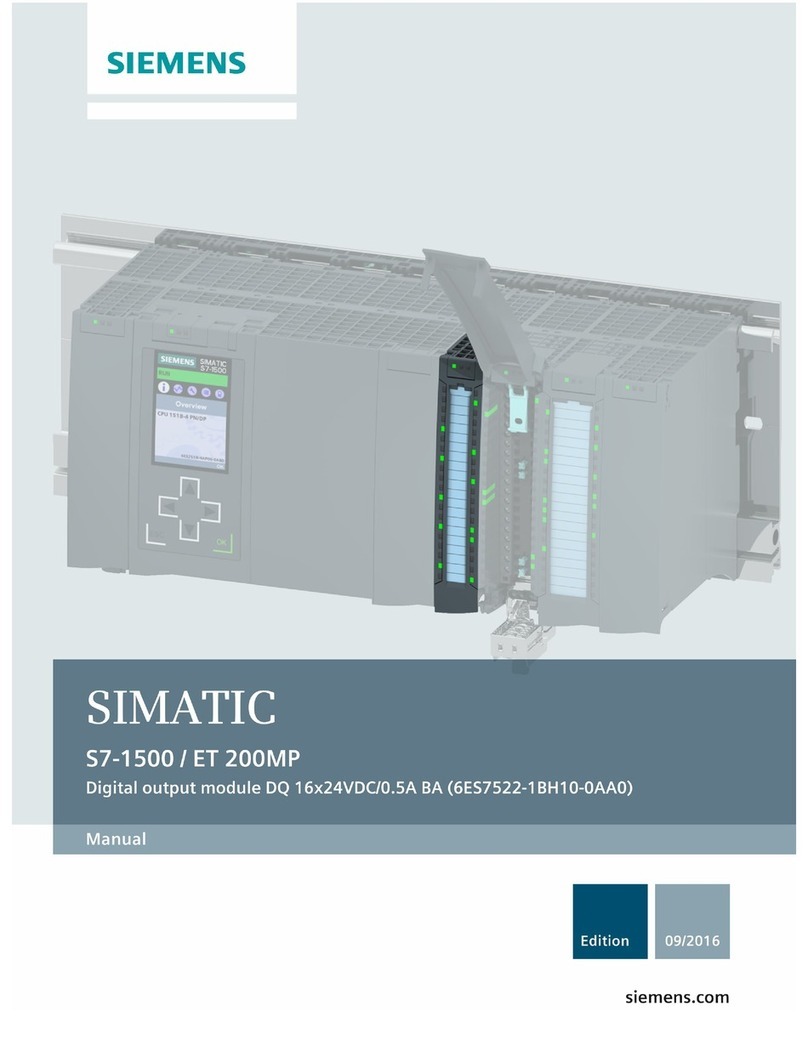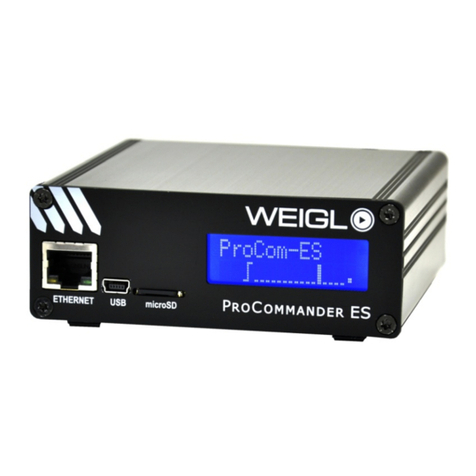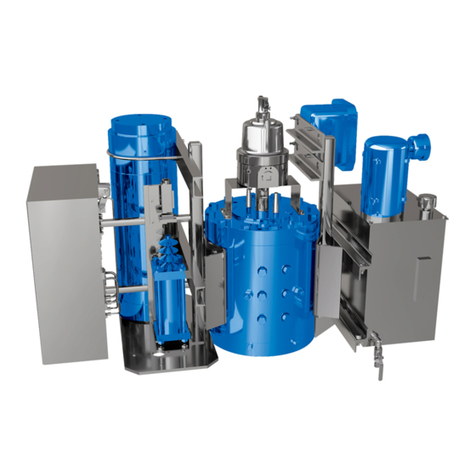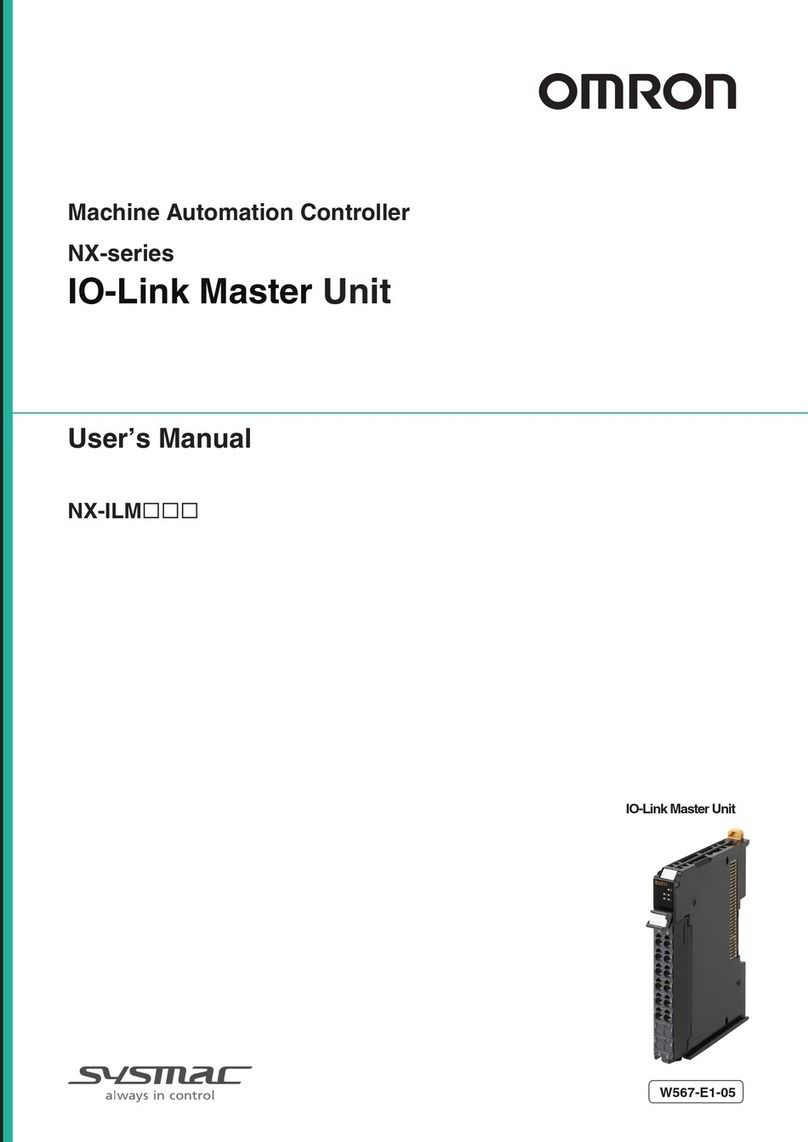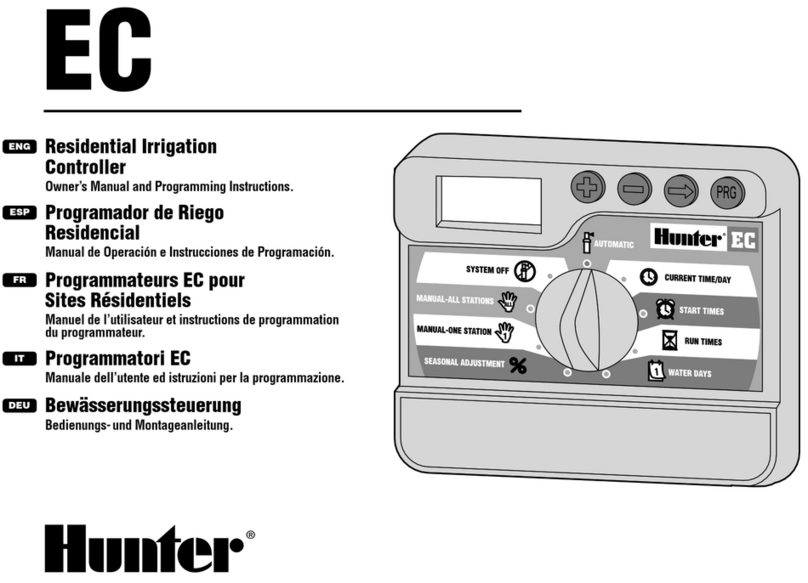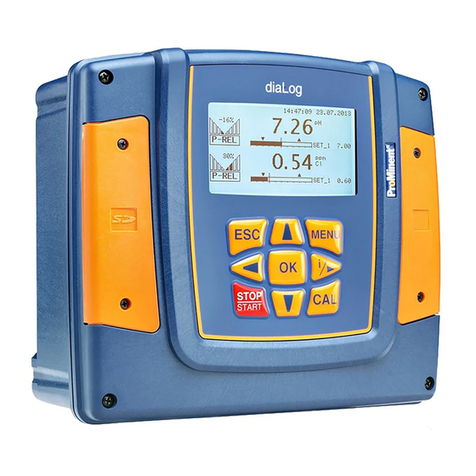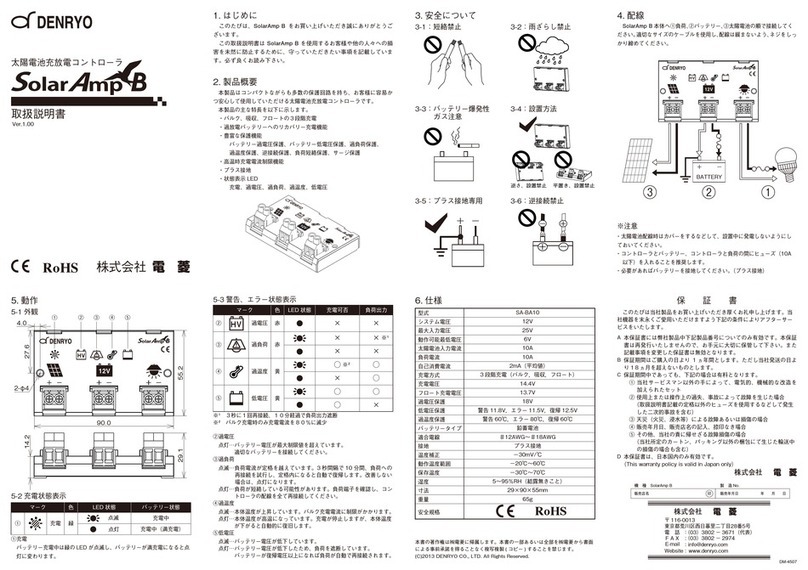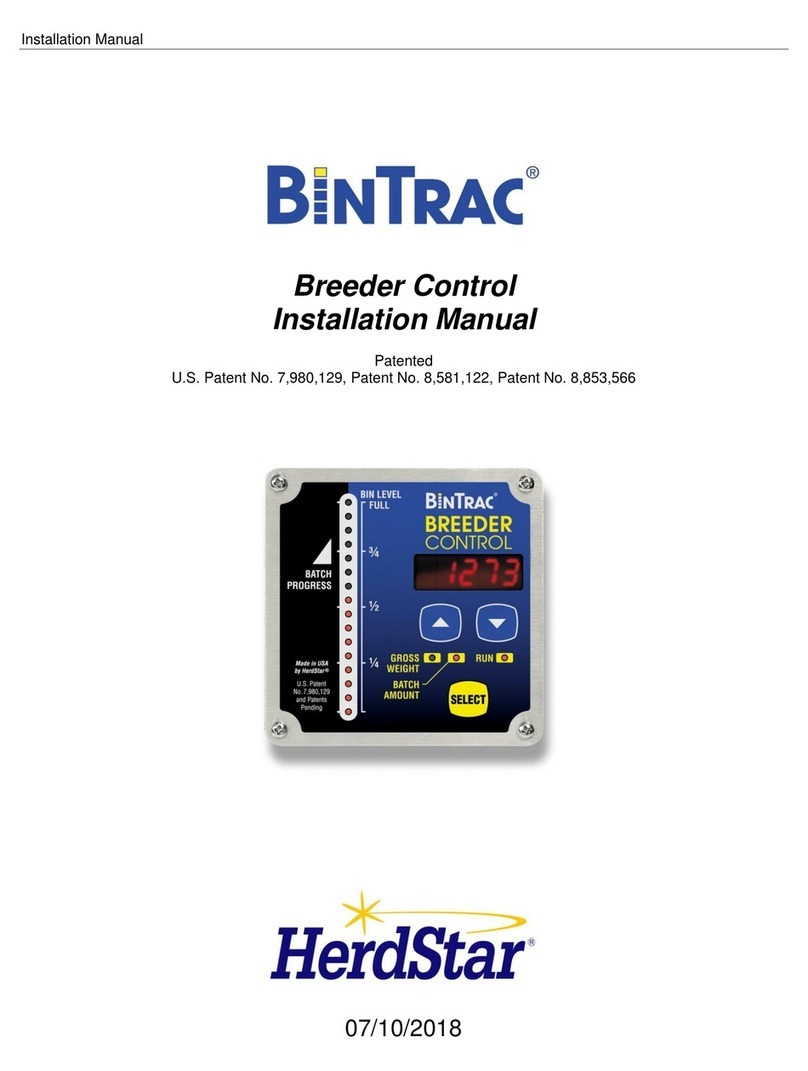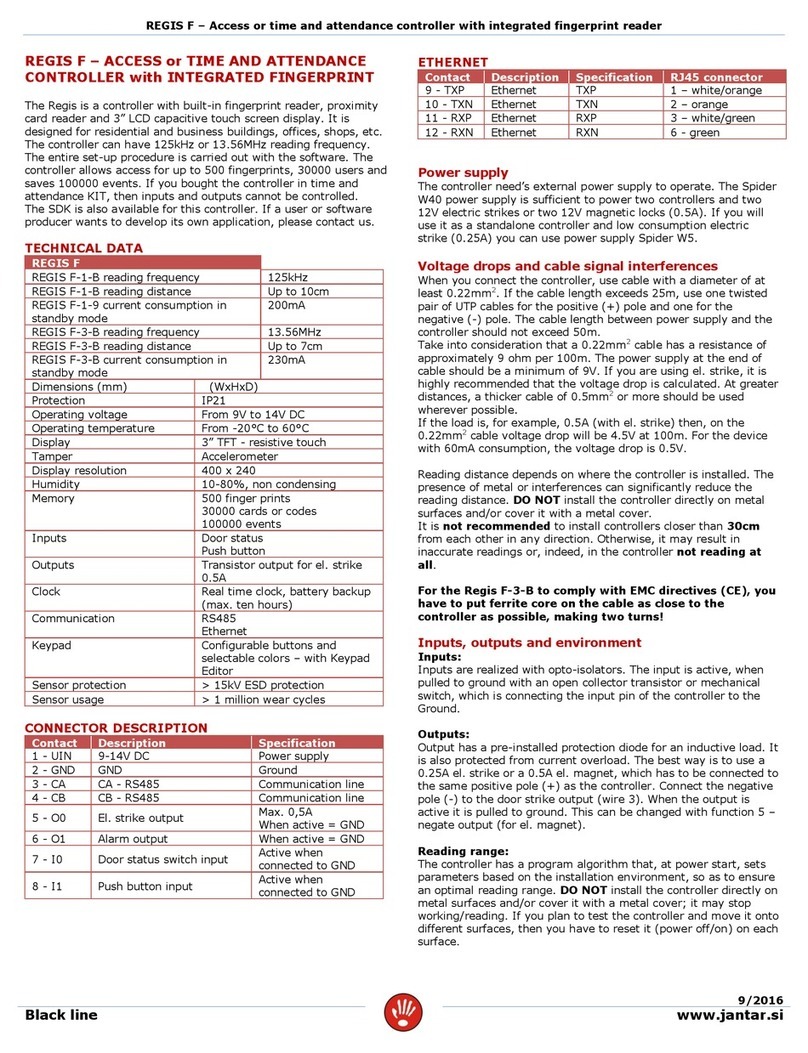Met One A2432 User manual

Model A2432
Manifold
System
Operators
Manual

2
Major revisions of this manual will be indicated by a new revision level. Minor corrections or
additions may be made at any time without changing the revision level. Changes made to this
manual causing the new revision are documented in the Manual Backdating section of this manual.
Published December 2001
Note:
Shipping this instrument out of the U.S.A. may require an export license. Contact the factory for
more information.
Manual Part Number 701127
Rev Description / ECO Date
A Original Issue 2/95
B Revision Update 10/97
C Revision Update 6/00
D Firmware change 12/01
E Add Omitted Alarm Module Section 06/02
Published by
FAX (541) 479-3057
Phone (541) 472-6500
Online www.particle.com
© Copyright 2000
Grants Pass, Oregon 97526-8882
Printed in the United States of America
No part of this publication may be
reproduced in any form without the prior
written permission of
Pacific Scientific Instruments
ALL RIGHTS RESERVED

3
Contents
Safety...................................................................................................................................................................4
Manual Safety Conventions............................................................................................................................4
Electrical Safety ..............................................................................................................................................4
Laser Safety....................................................................................................................................................4
Electrostatic Safety .........................................................................................................................................5
Unpacking and initial inspection......................................................................................................................5
Return Shipping / Chemical Handling.............................................................................................................5
Pacific Scientific Instruments Service Centers....................................................................................................6
Introduction..........................................................................................................................................................7
Particle Counter ..............................................................................................................................................7
Manifold...........................................................................................................................................................7
Manifold Controller..........................................................................................................................................7
Accessories.........................................................................................................................................................8
Applications .........................................................................................................................................................8
Setup...............................................................................................................................................................9
Tubing Connections..................................................................................................................................10
Electrical Connections ..............................................................................................................................12
Terminology..............................................................................................................................................14
Operation...........................................................................................................................................................15
Powering Up..................................................................................................................................................15
Programming A Sampling Routine................................................................................................................15
Default Settings – Sampling All 32 Ports..................................................................................................15
Simple Programming For Using Most, But Not All Ports..........................................................................15
Programming a Detailed Sampling Routine .............................................................................................16
Resetting the Default Sampling Routine...................................................................................................18
Setting Alarm Limits......................................................................................................................................18
Starting The Sampling Routine.....................................................................................................................19
Maintenance and Troubleshooting....................................................................................................................19
Troubleshooting Common Problems ............................................................................................................21
Manifold Cleaning and Maintenance.............................................................................................................22
Reference Information.......................................................................................................................................23
Manifold Sample Flow...................................................................................................................................23
Resetting Manifold Controller........................................................................................................................ 22
Scan Table Downloading format................................................................................................................... 22
Changing "Home" Test Frequency................................................................................................................ 22
Specifications:...............................................................................................................................................25
A2432 System...........................................................................................................................................25
Manifold ....................................................................................................................................................25
Manifold Controller....................................................................................................................................25
Particle Counter........................................................................................................................................25
Alarm Module............................................................................................................................................25
Declaration of Conformity and Warranty ..................................................................................... Back of Manual
List of Figures
Figure 1. Sampling Points Setup Example..........................................................................................................9
Figure 2. Manifold to Sample Point Tubing Connections.................................................................................10
Figure 3. Manifold to Particle Counter Tubing Connections..............................................................................11
Figure 4. Manifold System Electrical Connections............................................................................................12
Figure 5. System Connections (power cords not shown for clarity)..................................................................13
Table 2. Manifold system programming examples...........................................................................................14
Figure 7. Particle Counter Cycle and Location Programming..........................................................................16
Figure 8. Manifold Controller Scan Step Programming.....................................................................................17
Figure 12. Alarm Connector Plug Wiring...........................................................................................................20
Figure 13. Manifold Cleaning ............................................................................................................................22
Figure 14. Coupling Shoe..................................................................................................................................22
Figure 15. Manifold Theory of Operations.........................................................................................................23

4
Safety
Manual Safety Conventions
Warnings and Cautions are used throughout this manual, appearing before the procedure or step to
which it applies. A Warning indicates a personnel safety hazard. It calls attention to a procedure,
which if not correctly performed or adhered to, could result in injury or possibly death. Do not
proceed beyond a warning until the conditions are fully understood and met. A caution indicates an
equipment safety hazard and calls attention to a procedure, which if not correctly performed or
adhered to, could result in damage to the counter. Do not proceed beyond a caution until the
conditions are fully understood and met.
A triangle with exclamation point indicates a general safety
hazard and a triangle with lightning bolt indicates an electrical
safety hazard.
Electrical Safety
To reduce the risk of electric shock, do not expose to rain or moisture.
WARNING
Failure to use this instrument in a manner intended by Pacific Scientific Instruments may
circumvent the protection provided by this instrument, resulting in personal injury or loss of
life.
Laser Safety
This particle counter contains a laser-based sensor that is a Class 1 product (as defined by 21 CFR,
Subchapter J, of the Health and Safety Act of 1968) when used under normal operation and
maintenance. The manual contains no procedures for service of internal parts within this unit.
Service should be performed only by factory-authorized personnel.
The particle counter has been evaluated and tested in accordance with EN 61010-1:1993, "Safety
Requirements For Electrical Equipment For Measurement, Control, and Laboratory Use" and IEC
825-1:1993, "Safety of Laser Products".
WARNING
The use of controls, adjustments, or performance of procedures other than those specified
within this manual may result in exposure to invisible (infrared) radiation that can quickly
cause blindness.

5
Electrostatic Safety
Electrostatic discharge (ESD) can damage or destroy electronic components. Therefore, all work
inside the particle counter should be done at a static-safe workstation. A static-safe workstation can
be created by doing the following:
Use a grounded conductive table mat and resistor-isolated wrist-strap combination
Earth-ground all test instruments to prevent a buildup of static charge
WARNING
Using a wrist strap without an isolation resistor will increase the severity of an electrical shock.
Unpacking and initial inspection
Before opening the shipping container, inspect it and immediately notify the carrier of any signs of
damage for possible insurance adjustment purposes. If the container is intact, carefully open and
unpack the contents and compare each item with the shipping list to assure receipt of all listed
materials. Report any missing or surplus items to a Pacific Scientific Instruments representative.
Return Shipping / Chemical Handling
Should it become necessary to return the unit to the factory for any reason, you must first contact
your local service representative or Customer Service for return authorization instructions.
After you have received a Return Authorization number, follow the shipping instructions provided
below.
1. U.S.A.: Contact your local service representative (visit "Service and Support" at
www.particle.com) or Customer Service at (800) 866-8854 for mailing information. You
may also FAX Customer Service at (541) 474-7414.
2. International: Contact the nearest overseas representative listed on the back cover of this
manual. In Canada, contact Technical Support at (800) 866-7889 for the phone number of
your local agent. Everywhere else, visit our website at www.particle.com/sales1.htm and
click on your area for contact information.
3. Use the original container or carton and packing materials whenever possible.
4. If the original container and packing materials are not available, wrap the unit in “bubble
pack” plastic; surround with shock-absorbent material and place in a double-wall carton.
5. Seal container or carton securely. Mark “Fragile” and enter Return Authorization number in
an unmarked corner. All shipments will be returned if the Return Authorization number does
not appear on the box.
6. Return unit to your contact point in step 1 above.

6
Pacific Scientific Instruments Service Centers
=
=
=
=
Central
964 N. 21st Street, Suite H
Newark, OH 43055
TEL 740 366 5068
FAX 740 366 7619
Southeastern
2120 Corporate Square, Suite19
Jacksonville, FL 32216
TEL 904 721 9706
FAX 904 721 9709
New England
1200MillburyStreet
Heritage BusinessPark, Suite 6N
Worcester, MA 01607
TEL 508 757 3700
FAX 508 791 4441
Midwestern
555 Tollgate Road, Suite E
Elgin, IL 60123
TEL 847 888 3600
FAX 847 888 3789
West/Northwest
3375 Scott Blvd, Suite 406,
SantaClara,CA95054
TEL 408 588 0884
FAX 408 588 0881
Southwestern (2 locations)
459 N. GilbertRd., Suite A-135,
Gilbert, AZ 85234
TEL 480 892 2939
FAX 480 892 1861
Albuquerque, NM87112
TEL 505 893 3876
Factory
481 California Avenue
Grants Pass, OR 97526
TEL 541 479 1248
800 866 7889
FAX 541 479 3057
Eastern
127-G Gaither Drive
Mt. Laurel, NJ 08010
TEL 856 235-8224
FAX 856 235-7370
Southern
TEL 888 894 1655
FAX 817 656 7883
England
Pegasus House
Haddenham Business Park
Haddenham
Bucks HP178LL
England, United Kingdom
TEL 44 (0) 1844 299 336
FAX 44 (0) 1844 299 379
Germany
Ostwall 30
LÜdinghausen D-59348
Germany
TEL 49 (0) 25 91 3091
FAX 49 (0) 25 91 5014
Scotland
CEL Enterprise Centre
58 Cornton Road,
Stirling FK9 5AT
Scotland, United Kingdom
TEL 44 (0) 1786 448 338
FAX 44 (0) 1786 446 711
France
100 rue Blaise Pascal
Zl les Mardelles
93605 Aulnay-sous-Bois
Cedex
France
TEL 33 (0) 1 58 03 0500
FAX 33 (0) 1 48 66 4666
Pacific Scientific Instruments
maintains a complete
international distribution network.
Please contact the Factory service
center for the name of your local
representative.

7
Introduction
The manifold system consists of a particle counter, manifold, manifold controller, and allows a
single particle counter to sample up to 32 different locations. Each sample location is connected to
the manifold by tubing up to 30 meters in length; and two tubes (one for sample and one for return
air) are connected between the manifold and the counter. The manifold routes the air from each
location to the particle counter in turn. An external vacuum pump maintains a constant airflow in the
system.
A manifold system can scan in any predetermined sequence through any or all manifold ports in any
order, skipping the unused ports. The counter and manifold are usually positioned outside the
cleanroom and may be left unattended to execute the programmed sampling routine, reducing the
need for monitoring personnel to intrude into the cleanroom to collect count data.
The control of the entire system may be assigned to a computer creating a control hierarchy wherein
the Manifold is powered, programmed, and controlled by a Manifold Controller, the Manifold
Controller is controlled by the Particle Counter, which is controlled by the computer, making the
sampling process automatic.
Particle Counter Four different particle counters are available for use as part of the
manifold system, models A2100, A2200, A2400 and A2408. All
four have two, four, five, or six particle-size channels, but have
different minimum size sensitivity. The counter's internal vacuum
pump draws a 1 cfm sample column from the manifold sample
tube. A built-in printer provides a printout of all data, present or
past. For complete details on operating the counter and for a
complete list of specifications, refer to the operating guide you
received with the counter.
Manifold
The 32-port manifold has been designed for operation only with the
particle counters listed above. The manifold/counter system provides
for random sampling at up to 32 locations through sample tubes. The
manifold is the rotary type requiring an external vacuum pump to
maintain a constant purge air flow during 32-port operation .This flow,
approximately two to three cfm, occurs in all idle tubing. Purging is
accomplished by allowing purge time for each port before counting
begins.
Manifold Controller
The manifold controller houses the control, display, and alarm electronics for
controlling the manifold. It displays sample sequence information and allows
programming of the manifold sampling sequence as well as providing
interface with the optional alarm relay module.

8
Accessories
You can order several accessories to tailor the system to your needs. These accessories can be
ordered from the factory during the week from 8:00 a.m. to 5:00 p.m. PT.
Vacuum Pump — provides constant air flow through the
manifold .
Alarm Module — contains remote alarm contacts for up to 17 alarms (two
required for monitoring alarms at all 32 ports). Part number 2081414-01
Isokinetic Probes — for use in
unidirectional air flow to maximize
correlation between counts and actual
particle-size distribution. Sometimes called
“isoprobes.”
Tubing
Hytrel with Teflon lining to minimize particle adhesion to walls.
3/8" I.D. for connecting isokinetic probes to manifold, larger quantity
typical. Part number 960380
1/4" I.D. Hytrel for connecting manifold to particle counter, smaller
quantity typical. Part number 960011
Applications
The A2432 Manifold System is designed to assist users in complying with various regulatory
standards set by government or industry such as Fed-Std 209, ISO etc, by monitoring particulate
levels at many locations within a facility. Pacific Scientific Instruments does not, however, have any
responsibility or authority to inform or train its customers in the adherence to these standards. Please
consult the appropriate regulations or regulatory agency to understand the applicable requirements
for your facility.

9
Setup
The first step for a successful installation is to design a layout of the manifold system. The
following example is intended to demonstrate how to set up a system in a cleanroom facility. On the
facility plan in Figure 1, note the selection of each sample point on the floor plan. While not all
installations will use all the examples, they are appropriate for many users. Each sampling point
should collect through an isokinetic probe, which aids in collecting a sample with a representative
distribution of particle sizes. The manifold system equipment should be located so that the system
complies with Fed Std 209E which states: “For particles in the 0.1 to 1
µ
m range and for a flow rate
of 0.028m3/min (1.0 ft3/min) a transit tube of up to 30m may be used. For particles in the range of 2
to 10
µ
m the transit tube should be no longer than 3m Under these conditions, losses of small
particles by diffusion and of large particles by sedimentation and impaction are predicted to be no
more than 5% during transit through the tube. For most applications these tube configurations and
flow conditions will be satisfactory. For special situations, more precise transit particle transit
characteristics can be calculated (see B20.8).” (Fed-Std-209E, B40.2.1).
Figure 1. Sampling Points Setup Example
Sampling Point Number Event/process monitored Type of isokinetic probe
,Gowning and cleanup Through wall
Mid-room point Direct mount
,Access points Through wall
General room activity Floor mounted vertical
,,Workstation activity Ceiling mounted L-hook
Background baseline Ceiling mounted J-hook
Table 1. Sampling Points Examples

10
Each tubing run should be the same length, ±20%. For example, having the manifold only 10 feet
from the nearest sampling point and 90 feet from the farthest will create imbalances in the system
which may adversely affect sampling.
Tubing Connections
The isokinetic probes you received with your order should be protected with plastic caps on the
openings, which should remain in place until they are ready to use in order to minimize
contamination . Install the isokinetic probes at the desired points, and select a position for the A2432
system equipment less than 100 feet (including vertical runs) from every sampling point. Verify that
adequate power is available for this equipment, and make sure that the counter and controller front
panels will remain accessible.
When the sample tubing is cut to length, cover the ends until ready to attach it to the equipment at
either end, to minimize system contamination. Connect the sample tubing to the isokinetic probes
and route the tubing to the manifold equipment without kinking. Any bend in the tubing can affect
the particle size distribution at the particle counter because the larger particles are heavier and may
drop out in bends or loops. Each bend radius should be no less than four inches and care should be
taken to avoid potential kinks at any point along the tubing where it is anchored to a clip or other
hold-down device. Fully support the tubing wherever possible and do not drape the tubing across any
sharp cornered objects where later heat induced sagging may cause pinching or kinking.
Connect the tubing to the manifold system equipment referring to figures 2 and 3 , following these
steps:
1. Connect all sample tubing (3/8" I.D.) to the appropriate manifold ports. If only a few
manifold ports are to be used, connect the sample tubing to ports spaced proportionately. For
example, five samples should be connected to ports 1, 7, 13, 19 and 26. This will keep the
airflow in the manifold balanced. Unused ports need to be left open to relieve the excess
vacuum load on the pump, or the relief valve on the pump must be adjusted according to the
pump manufacturers instructions. For further explanation of the airflow in the manifold, refer
to the “Theory of Operation” section of this manual.
Figure 2. Manifold to Sample Point Tubing Connections
Sam
p
le
p
orts
(
u
p
to 32
)
Isokinetic Probes
to

11
2. Attach a short piece of tubing (1/4" I.D.) between the particle counter sample inlet (on top of
counter) and the manifold sample air outlet fitting (center of shroud).
3. Attach a "return air" tube (1/4" I.D.) between fitting on rear panel of particle counter and
manifold.
4. Attach large hose between vacuum pump and manifold assembly exhaust outlet, leaving
unused vacuum connection capped.
Figure 3. Manifold to Particle Counter Tubing Connections
Sample Line
Connections
Return Air Connections
To
Vacuum
Pump

12
Electrical Connections
Refer to figure 4 to make Electrical connections.
1. Connect controller cable between counter rear-panel "Manifold" connector and manifold
controller rear-panel "Particle Counter" connector.
2. Connect the manifold cable between the manifold assembly and controller rear-panel
connector marked "Manifold".
3. Plug the counter and manifold controller into facility power.
Figure 4. Manifold System Electrical Connections
Manifold
Cable
Connections
Controller
Cable
Connections

13
WARNING
To avoid injury or equipment failure, the vacuum pump must be connected to facility
power in accordance with local building codes. The voltage and current required by the
vacuum pump are at lethal levels.
4. Wire the vacuum pump to line power that matches the requirements of the pump in
accordance with local electrical codes. A wiring diagram is provided in the vacuum pump
Operation Manual.
5. Check rear-panel identification label of the particle counter and manifold controller for line
voltage and frequency requirements. Verify instrument compatibility with facility power.
Figure 5. System Connections (power cords not shown for clarity).

14
Terminology
Before configuring the A2432 Manifold System, it is important to clearly understand the
terminology used to describe the system and programming. The terms listed below are used
throughout this manual and are important to keep distinct.
Sampling Point – the physical place in the facility where the sample is being drawn from. Normally
an Isokinetic Probe, sometimes called an “isoprobe” is installed at each sampling point.
Port Number – the actual fitting on the front of the manifold itself where the tubing from the
sampling point is connected, numbered 01 through 32.
Scan Steps – The order of programmed sequence steps set up in the Manifold Controller by the
operator; up to 100 steps, numbered 00 through 99. These steps may or may not coincide with the
port number. For example, a sequence of scan steps may be programmed in which port number 07 is
the first port sampled by the system. In that case, the first scan step (00) would be port 07.
Cycles – the number of samples to be drawn at each port before moving to the next scan step,
programmed at the particle counter.
Locations – the number of scan steps to be used in a given sampling operation, programmed in the
particle counter. Refer to Table 2 to interpret the following example:
1. A sampling operation is set up with 5 sampling points. The sampling points are connected
to the Manifold at port numbers 01, 07, 13, 19 and 26.
2. The Manifold Controller is programmed for five scan steps (00-04) as shown in the table.
3. The number of cycles is set in the Particle Counter to 001, for one sample at each scan step.
4. The number of locations is programmed into the Particle Counter. If the number of locations
matches the number of ports used and scan steps, each port will be sampled once.
5. A number of locations may be programmed into the particle counter which does not match
the number of ports used or the number of scan steps. If the programmed number of
locations is fewer than the number of connected ports and scan steps, some ports will not
be sampled.
6. If the programmed number of locations exceeds the number of connected ports and scan
steps, some ports will be sampled more than once.
1. Port No. 01 07 13 19 26
2. Scan Step No. 00 01 02 03 04
3. Cycles = 001 1 sample 1 sample 1 sample 1 sample 1 sample
4. No. of Locations = 005 001 002 003 004 005
5. No. of Locations = 003 001 002 003
6. No. of Locations = 007 001 002 003 004 005
006 007
Table 2. Manifold system programming examples

15
Operation
Powering Up
Turn the Manifold Controller power on, then turn on the Particle Counter; DO NOT turn the vacuum
pump on yet. The display on the Manifold Controller should momentarily flash “32” indicating all
32 ports are enabled and then display “01” indicating that the Manifold is currently at port 1, ready
to sample. If these conditions are not met refer to the troubleshooting section of this manual.
At the Manifold, the motor should be heard as the manifold performs a “home test” and positions the
internal sample pickup shoe to port 1.
Programming A Sampling Routine
Note: If the System was previously in use under external computer control, it must be released from
computer control and turned off and back on before programming may begin. Programmed sampling
routines should be retained in memory while power is off. To clear a previously programmed
sampling routine, press in turn Local (lit); Program (lit); Enable All Ports and Enter.
Default Settings – Sampling All 32 Ports
The factory default settings for sampling parameters are as follows:
Manifold Controller:
Ports 01-32 enabled for sampling
32 scan steps programmed (00-31)
Particle Counter:
Cycles set to 1, for one sample at each scan step
Locations set to 0 for continuous sampling
Sample time set to 1 minute, which draws a 1ft3sample
Hold time set to 15 seconds, the minimum when using a manifold system
These settings will cause the system to begin at port 1, take a one minute sample, move to port 2 and
wait 15 seconds before taking a one minute sample, move to port 3 and wait 15 seconds, etc.,
repeating the process indefinitely, returning to port 1 to begin a new routine after sampling port 32.
Simple Programming For Using Most, But Not All Ports
If the system is going to use most of the ports and leave only a few unsampled, simple programming
consists of telling the Manifold Controller which ports to skip instead of which ports to use. Follow
the steps below to create such a sampling routine.
1. At the Manifold Controller, (Figure 6)
verify “Local” is lit. If not, press the
“Local” button so that it is.
2. Press ↑
↑↑
↑or ↓
↓↓
↓until port to be skipped is
displayed on two digit LED display
3. Press “Skip” button and verify “Skip”
LED lights red. Pressing “Skip” again
restores the port to the sampling routine
4. Repeat steps 2 and 3 for each port to be
skipped
5. When ready to begin sampling, press
“Remote” and verify “Remote” LED is lit.
Fi
g
ure 6. Manifold Controller “Ski
p
” Pro
g
rammin
g

16
6. At the Particle Counter, (figure 7) press ↓
↓↓
↓until “Cycles” LED is Lit
7. Press “Program” and verify the 3 digit LED displays CYC and the 7 digit LED displays 00i.
Use the arrow keys to set the cycles to the desired number of samples taken at each port.
8. Press “Enter” to save Cycles setting, and verify 3 digit LED displays loc and the 7 digit LED
displays 00i.
9. Use the arrow keys to set the desired number of locations (as previously defined in
“Terminology”). Programming 000 locations will cause the sampling routine to be repeated
continuously.
10. Press Enter to save the programmed sampling routine.
Figure 7. Particle Counter Cycle and Location Programming
Programming a Detailed Sampling Routine
To program a more complex routine tailored to specific situation requirements, use the following
procedure. The example given uses the earlier example, wherein only 5 sampling points are used and
they are connected to manifold ports 01, 07, 13, 19 and 26. Begin with the Particle Counter and
Manifold Controller turned on and the Manifold Controller on Local mode.
1. At the Manifold Controller (Figure 8), press “Program” and verify that the 2 digit LED blinks
the scan step number (00) briefly and then displays the port number (01). This indicates that
the first scan step in the sampling routine will be port 1.
2. Press “Next” to save the programmed scan step and move to the next scan step. Verify the 2
digit LED blinks the next scan step number (01) briefly and then displays the next port
number. The port number displayed is from the factory defaults or from a previous program.
3. Press ↑
↑↑
↑repeatedly to display “07” in the 2 digit LED display. This sets the second scan step
(01) to port 7.
,
,

17
4. Press “Next” and verify the display blinks the next scan step (02) and displays the port
number.
5. Press ↑
↑↑
↑until the display shows “13”
6. Repeat steps 4 and 5 for the remaining 2 scan steps (03 and 04) and port numbers (19 and
26).
7. Press “Enter” to conclude programming
8. Verify programmed sequence by repeatedly pressing ↑
↑↑
↑and observing led display each
programmed port number in sequence.
9. Press “Remote” and verify “Remote” LED is lit to prepare for sampling.
Figure 8. Manifold Controller Scan Step Programming
The steps above may be repeated and modified to include a wide variety of configurations and
sequences. Port numbers need not be sampled in numerical order, and may be entered more than
once in a sequence of scan steps.
The following steps describe programming the particle counter for this sampling routine.
1. At the Particle Counter (Figure 9), press ↓
↓↓
↓until “Cycles” LED is Lit
2. Press “Program” and verify the 3 digit LED displays CYC and the 7 digit LED displays 00i.
Use the arrow keys to set the cycles to 003.
3. Press “Enter” to save Cycles setting, and verify 3 digit LED displays loc and the 7 digit LED
displays 00i.
4. Use the arrow keys to set the number of locations (as previously defined in “Terminology”).
to 0i0.
5. Press Enter to save the programmed sampling routine.
,
,
These steps create a
sampling routine wherein the
system will draw three
samples (cycles) from port 1,
then draw three samples
from port 7, then draw three
samples from port 13, then
draw three samples from port
19 and then draw three
samples from port 26; a total
of 5scan steps. It will then
repeat the entire process
b
efore stopping, for a total of
10 locations.
,
,
,
,
Figure 9. Particle Counter Cycle and Location Programming

18
Resetting the Default Sampling Routine
To restore all 32 ports to active sampling status, press in turn, “Local”; “Program”; “Enable All
Ports”; and “Enter” keys.
To completely reset the manifold controller to factory default settings and clear the memory of all
programming, turn the power switch on the rear of the controller to the off position, and, while
holding down the “Program” key, turn it back on.
Setting Alarm Limits
The alarm limits for the various particle size channels in the Particle Counter may be copied into the
Manifold Controller memory so that each sample point may have unique count alarm limits. Figure
10 and the following example demonstrates the steps to set alarm limits for the system, using the
sampling routine previously described under “Programming a Detailed Sampling Routine.”
At the Manifold Controller:
1. Press “Local” key, verify LED is lit. Two digit
display will briefly blink the first scan step (00)
and then display the associated port number (01)
2. Press “Program” key, verify LED is lit.
At the Particle Counter: Verify the counter is
displaying the particle size range in the 3 digit LED
and is not running.
3. Press ←
←←
←or →
→→
→keys to display the desired
size range.
4. Press “Program” to display alarm limits for
the selected size range.
5. Use the four arrow keys to set the digits to
the desired alarm limit.
6. Press “Enter” to save settings.
7. Repeat steps 3 – 6 for each desired size range
At the Manifold Controller:
8. Press “Copy” key to copy alarm limits from the
Particle Counter to the Manifold Controller for that
scan step and port number
9. Press “Next” key to advance to the next scan step
(01) and port number (07) in the sample routine.
Note: The “Back” key may be pressed to return to
a previous scan step.
10. Repeat steps 3 – 9 for the remaining scan steps and
press “Enter” when all alarm settings have been copied.
If programming of alarm limits in all 32 ports is desired, each port may be selected in turn by using
the ↑
↑↑
↑or ↓
↓↓
↓keys on the manifold controller instead of the “Next” and “Back” keys. To view the
Alarm settings for the sampling routine after copying is complete, select the desired scan step using
,
Figure 10. Copying Alarm Limits

19
the ↑
↑↑
↑and ↓
↓↓
↓keys at the Manifold Controller. At the Particle Counter, use the four arrow keys to
display the desired size range, then press and hold the “Enter” key to display the alarm setting for
that size range.
Starting The Sampling Routine
Once the sampling routine has been satisfactorily programmed and the desired alarm limits are
copied, the system is ready to operate. Ensure Manifold Controller is in Remote and Particle
Counter is in Automatic mode. Turn on the Vacuum Pump supplying vacuum to the manifold system
and press “Run” on the Particle Counter. The Manifold will begin sampling from the first
programmed port and proceed through the sampling routine until it is complete.
Using the Alarm Module Option
Each alarm module provides a remote alarm contact for up to 17 alarms (16 port alarms plus an
"Any" alarm when one or more port alarms are on). The alarm output signals are available through a
connector on alarm module and provide latched outputs that are triggered by count alarms. The
alarm module also provides +12 V @ 2 A and +5 V @ 2 A to power relays for alarm-driven devices
when a count alarm is detected. Two alarm modules are required for simultaneously monitoring all
32 ports.
Figure 11. Alarm Module Connections
Data and
Control cable
connector
AC Power
connecto
r
Alarm signal
and power
connectors

20
Using figures 11 and 12, connect the alarm module as follows:
1. Connect ribbon cable supplied with the alarm module from 25-pin connector on alarm
module to 25-pin "Alarm Out" connector (either 1 thru 16 or 17 thru 32) on rear panel of the
manifold controller.
2. Connect the alarm device between the applicable "+" voltage and the desired alarm number
output (1 to 16, or 17 to 32 if so connected).
3. Connect AC power cable from alarm module to facility power outlet.
Figure 12. Alarm Connector Plug Wiring
To acknowledge (turn off) a remote alarm, press the “Reset Alarms” key on the manifold controller.
On some older manifold controllers, it may be necessary to press, in order, “Local,” Reset Alarms,”
and “Remote.”
Table of contents
Popular Controllers manuals by other brands
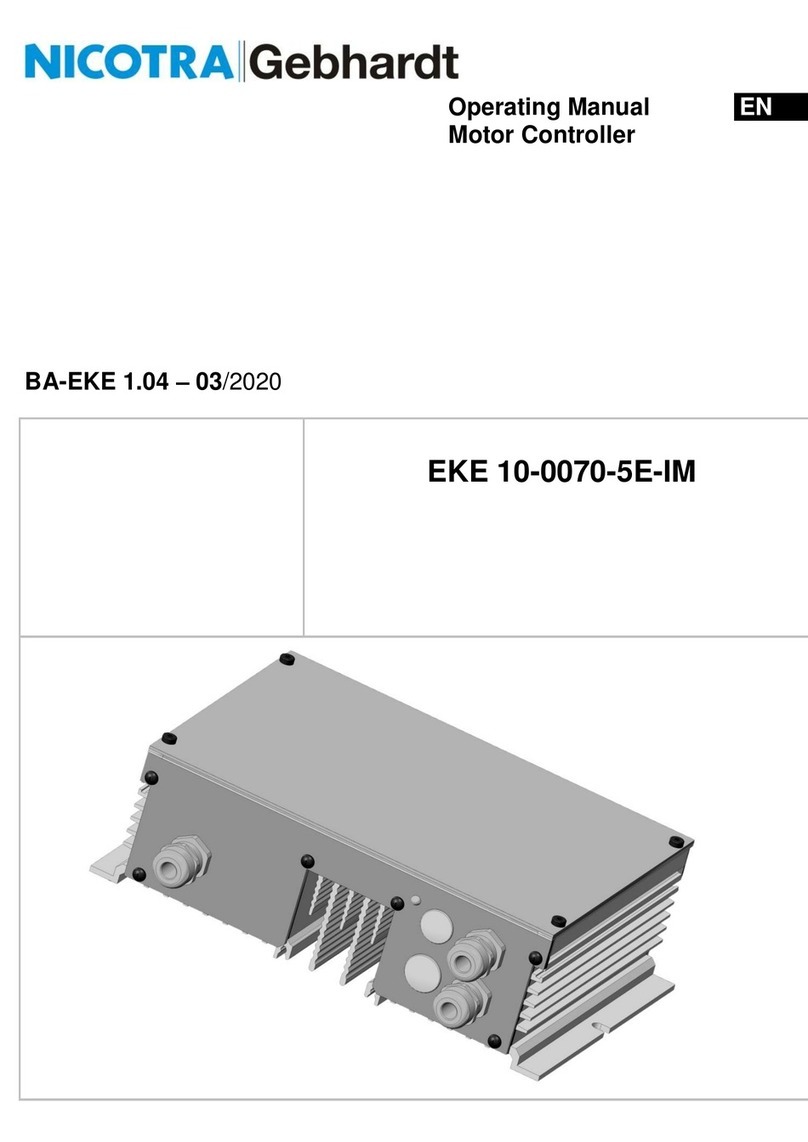
Nicotra Gebhardt
Nicotra Gebhardt EKE 10-0070-5E-IM operating manual
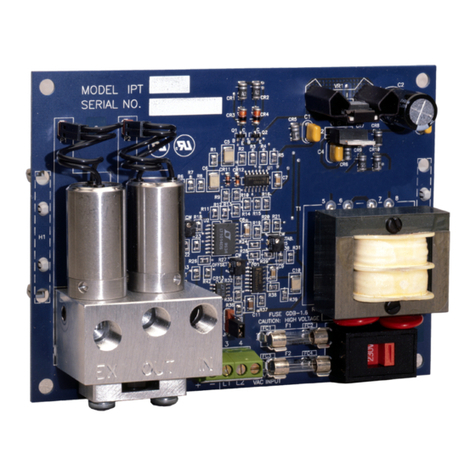
Maxcess
Maxcess Magpowr IPT instruction manual
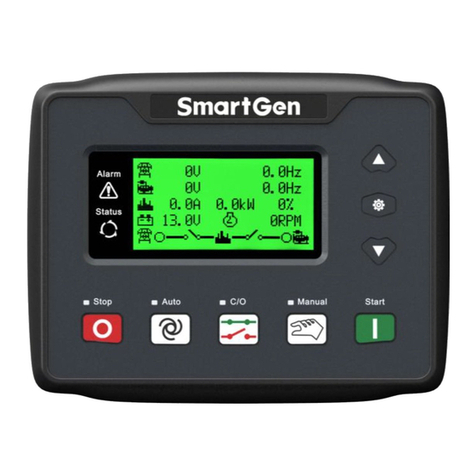
Smartgen
Smartgen HGM400N Series user manual
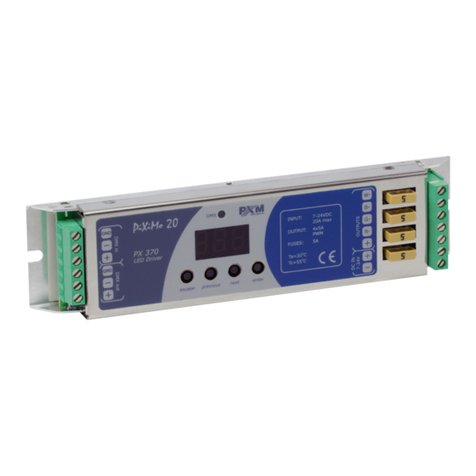
PXM
PXM PX370 user manual
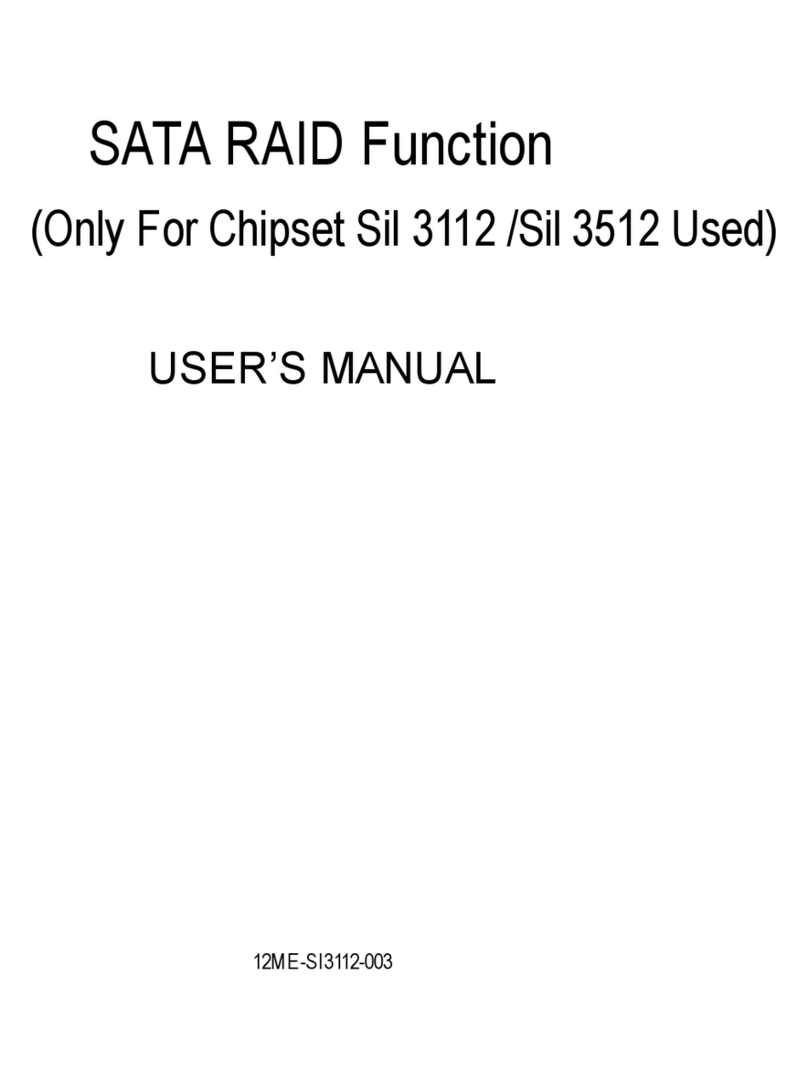
Gigabyte
Gigabyte Network Device GA-7N400 user manual
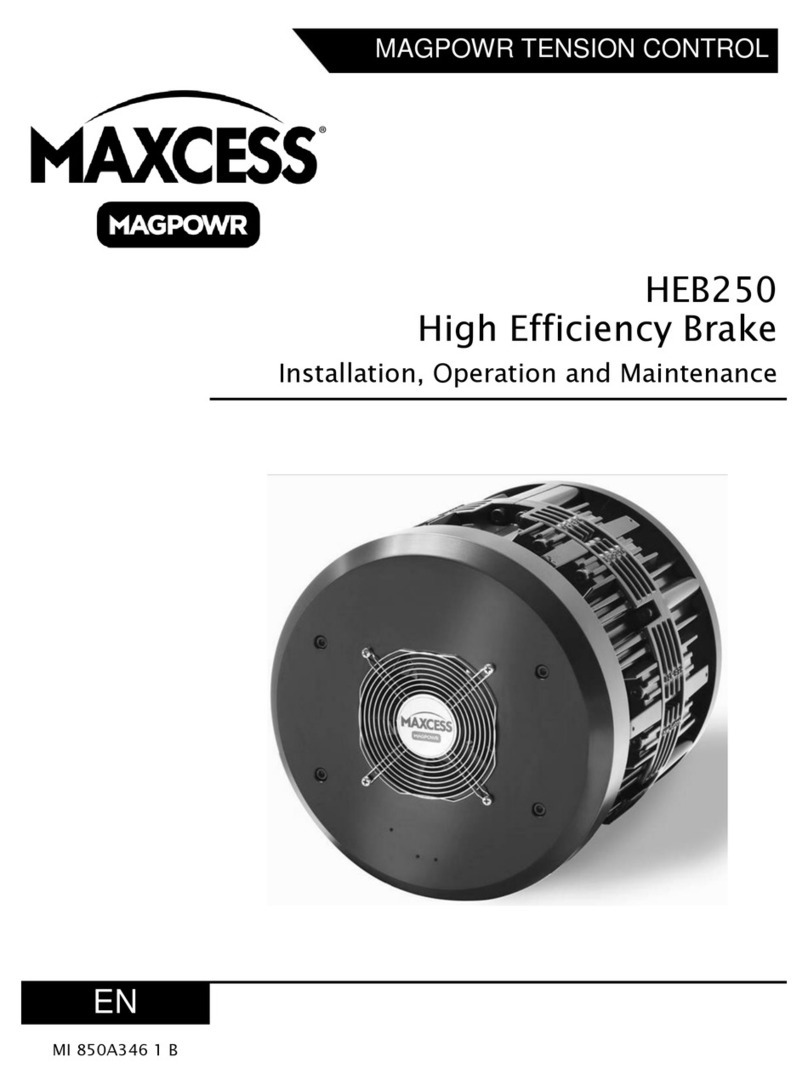
Maxcess
Maxcess MAGPOWR HEB250 Installation, operation and maintenance
